800 Years of Death and Disease in Cambridge
A guided walking tour
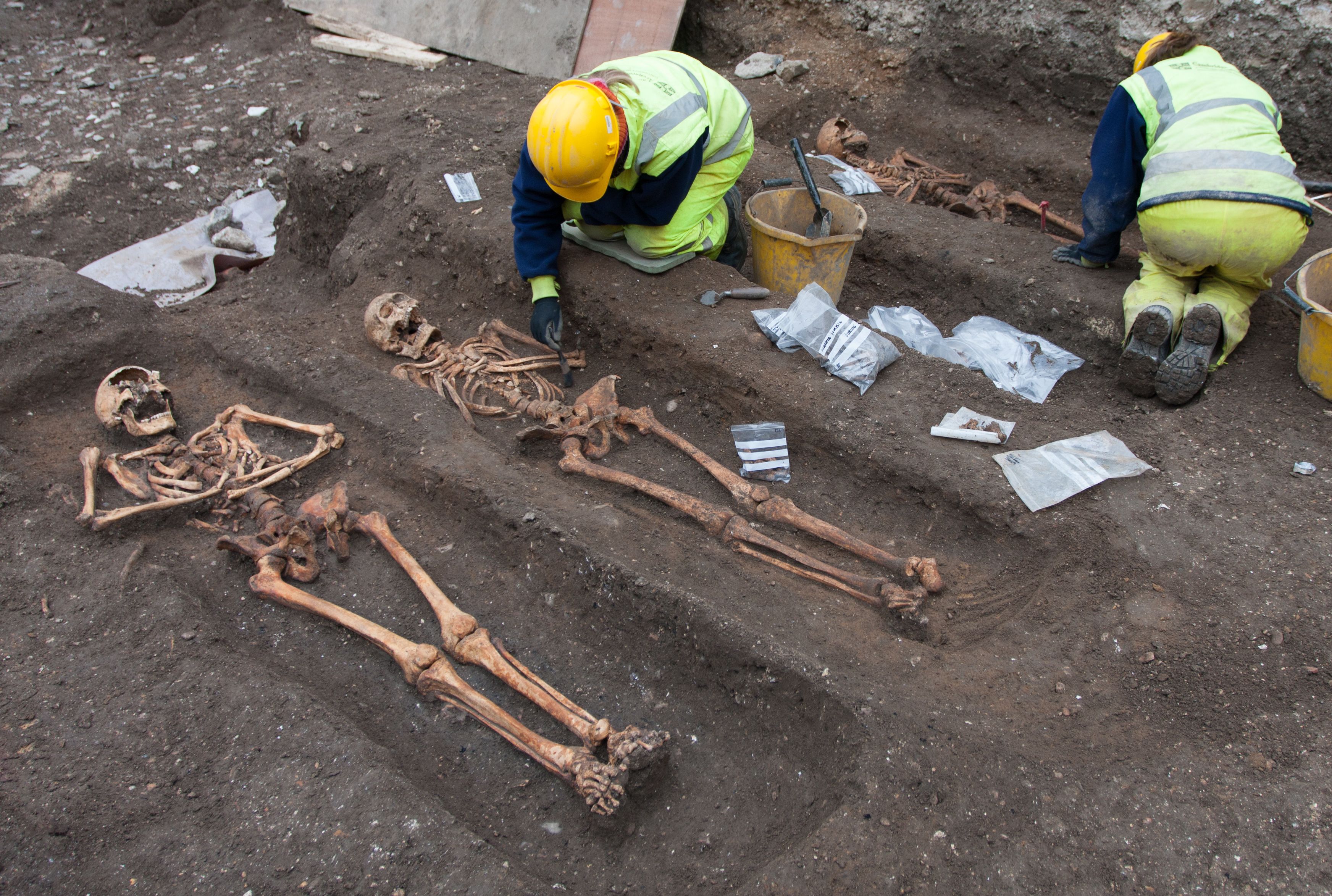
Welcome to this walk about death and disease in Cambridge – an unusual topic, but one that we think you’ll find fascinating! It is brought to you by Cambridge Public Health at the University of Cambridge.
This walk is for everyone, not just for medical specialists, so we won’t be blinding you with science. And it’s not just a history of illness, but a heartening story of the improvement in medical care and social welfare in Cambridge, reflected in the steadily improving standards of public health. Along the way, we will give plenty of lurid details revealing just how pestilential this beautiful city of ours once was.
We’ll be stopping at a wide range of places which have played a role in shaping this story. Most of these are within the city centre, although it does include a slight detour out to the Mill Road area, which can be easily left out if you don’t have time.
The walk is simple to follow – there are sixteen places to visit along the route, with sixteen corresponding tracks. These, along with images and text describing the places, are below the map. If you would prefer to download a PDF version of the map, you can do so here for your mobile or here for a printable version.
We recommend choosing the option to 'listen in browser' for the audio tracks.
The walk takes about two hours. We won't be going inside any buildings, but if they are open to the public, you might want to have a look around. Please be mindful of cyclists and use pedestrian crossings when crossing roads.
The starting point is the Tourist Information on Peas Hill.

1. Peas Hill
Throughout its 800 year history, Cambridge University has been at the forefront of many important advances in medicine and public health. Our story of medical care begins long before the establishment of the University, and runs from medieval times to the present day.
Right up until the 20th century, the people of Cambridge suffered from a multitude of diseases, to which their unhealthy, water-logged fenland surroundings made a big contribution. Medieval Cambridge was notorious for its crowded, unsanitary conditions and epidemics of the deadly plague were frequent.
Before the advent of modern medical care, most people were not wealthy enough to afford a doctor. They were forced to find their own cures for fatal illnesses such as malaria and the Black Death, often falling back on a mixture of folklore, superstition and witchcraft. The modern growth of knowledge about how to prevent and treat disease has not only decreased pain and suffering, but increased the life expectancy of many, as mortality rates have fallen.
The University occupied a seminal role throughout this history of improving public health. The education of doctors and health professionals not only shaped the future health of the population in this city, but contributed to advances in medicine on a global scale.
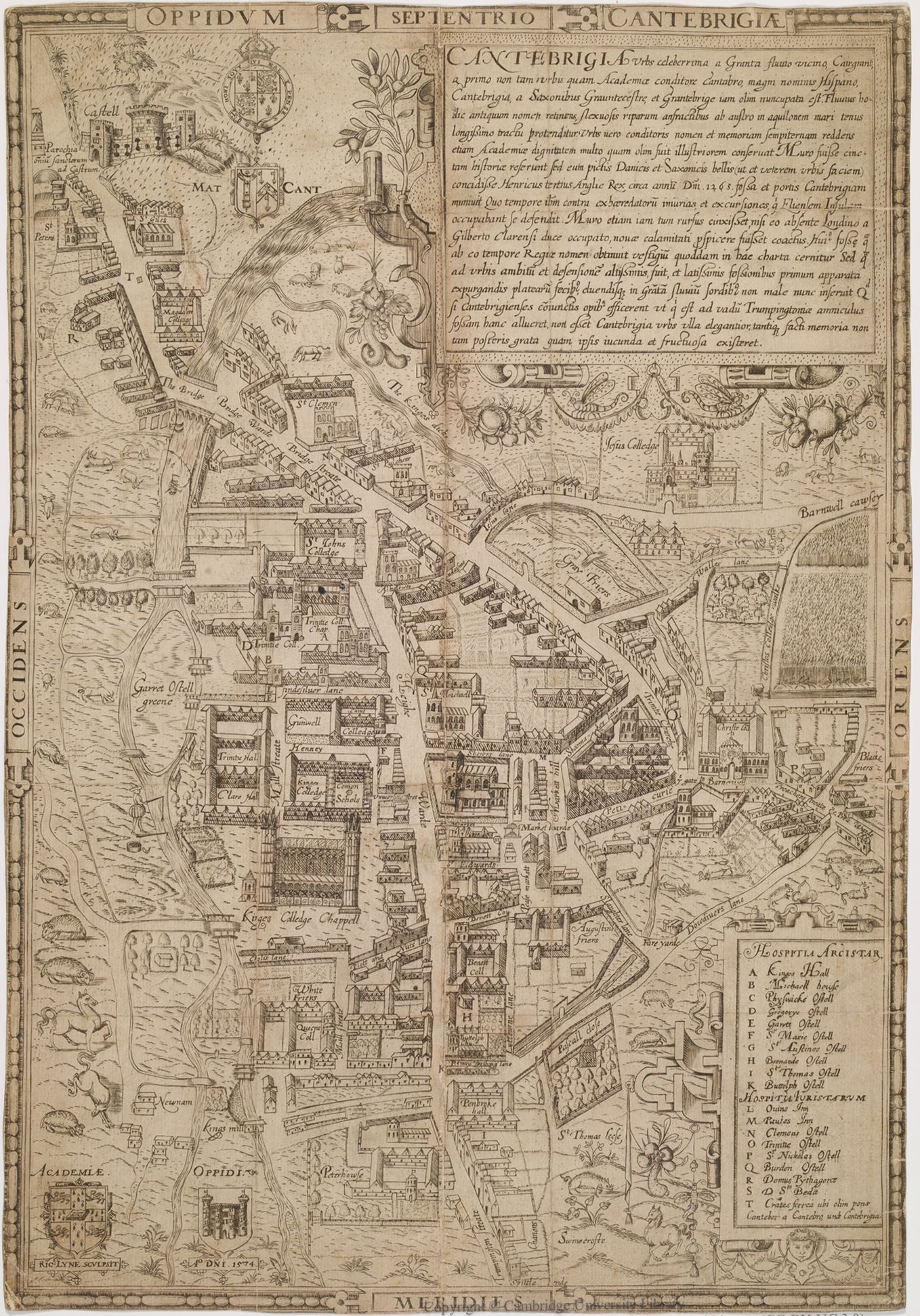
Oppidum Cantebrigiae, Richard Lyne, 1574. This is the earliest known complete map of Cambridge. (Cambridge University Library)
Oppidum Cantebrigiae, Richard Lyne, 1574. This is the earliest known complete map of Cambridge. (Cambridge University Library)
There’s no doubt that Cambridge is a far healthier city to live in today than at any other time in the last 800 years. The University continues to be at the very centre of the latest research into many diseases, their prevention and cure.
Head down Peas Hill away from Great St Mary's Church and turn right onto Bene't Street. There you will find St Bene't's Church on the left hand side.
2. St Bene't's Church
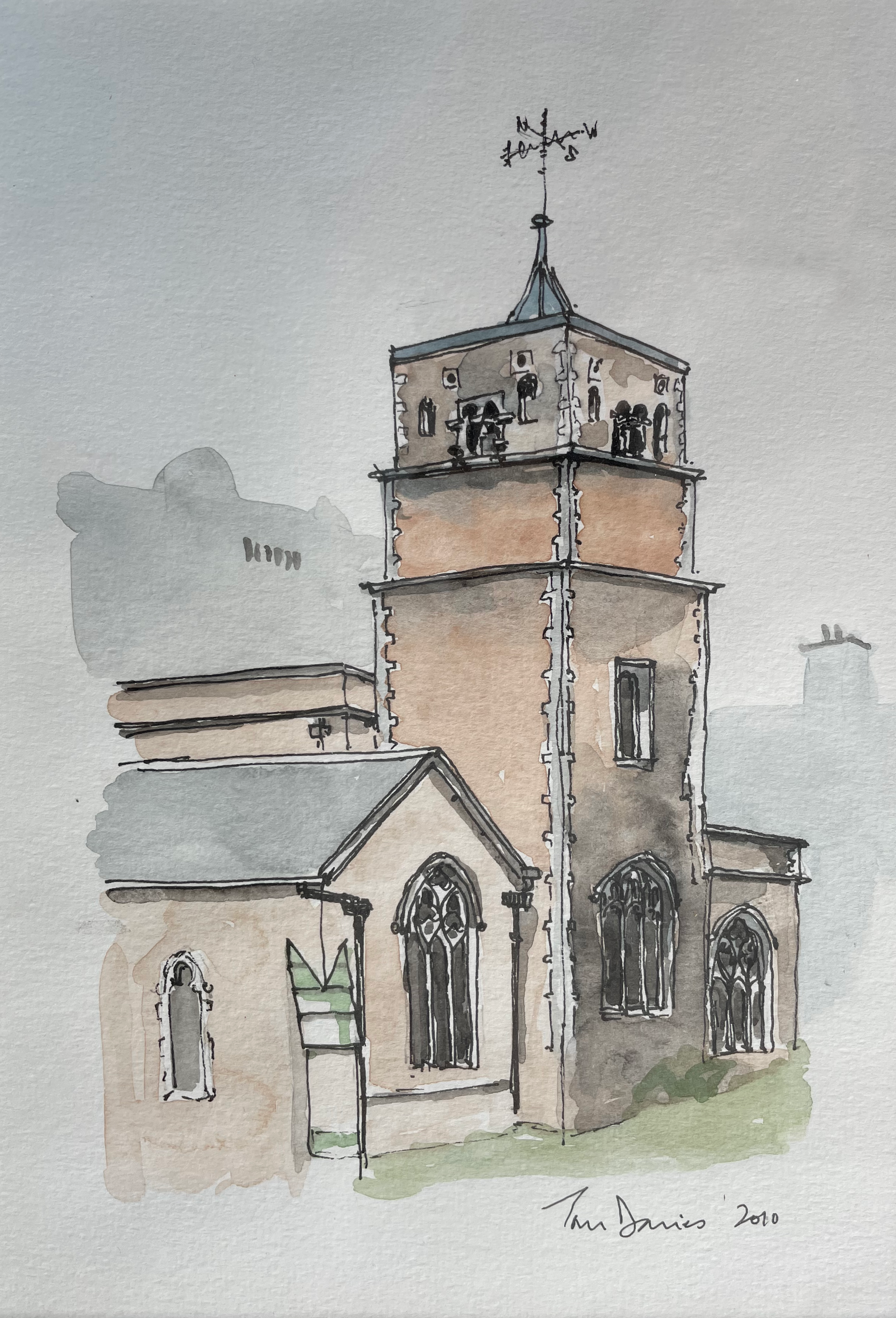
St Bene't's Church
St Bene't's Church
Today, the ancient church of St Benedict – known as St Bene't's – is the oldest surviving building in Cambridge. Even before the establishment of the University some 800 years ago, Cambridge – or Grantabrycge as it was known – was already a significant settlement and an important centre of spiritual learning.
The existence of a thriving monastic community is central to the story of public health in Cambridge.
During the thirteenth-century, an Augustinian Friary stood on the neighbouring site, containing its own cemetery and gardens. When this site was excavated around 1910, several skeletons were discovered with brass buckles, leather belts and fragments of woollen habits still clinging to them.
Monasteries provided the only form of social security to the ordinary man in the street, as those in religious orders were expected to work for the community, offering shelter to all travellers and pilgrims and caring for the sick, poor and the elderly.
Most religious houses also had their own infirmary for sick and aged monks, and a separate hospital for the public. This included not just the local population, but also the vast numbers of vagrants, beggars and unemployed people who thronged the streets of Cambridge. The monasteries provided these people with clean clothing, comfortable bedding and fresh food, as well as prayer and spiritual comfort, as an intrinsic part of their medical care.
Although the practice of medicine differed greatly from that of today, monastic infirmaries undoubtedly gave help and hope to thousands of otherwise destitute people.
Keep going down Bene't St and turn right onto King's Parade. Head up past Great St Mary's Church and onto Trinity Street. Keep walking until you pass Trinity College on your right. Immediately next to this is St John's College.
After the Plague: health and history in medieval Cambridge
Cambridge researchers have been exploring the health, lives and deaths of people in medieval Cambridge by examining skeletons excavated from burial sites across the city by the Cambridge Archaeological Unit.
In 2006 excavations at Corpus Christi College next to St Bene’t’s churchyard uncovered a mass burial of plague victims from the 14th Century. The research was able to identify the skeletons of these victims by recovering ancient DNA of the bacterium that causes plague from their teeth.
In 2016, archaeological excavations of more than 30 burials associated with the nearby Augustinian friary at the New Museums site uncovered several individual burials later identified as plague victims from the 14th to 16th Centuries.
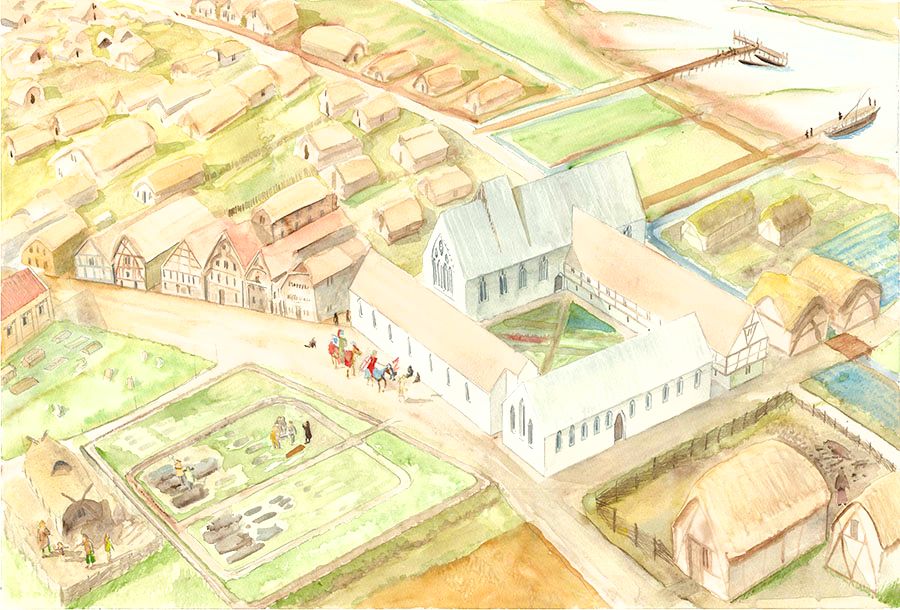
Artist's impression of a medieval hospital in Cambridge (Mark Samuel)
Artist's impression of a medieval hospital in Cambridge (Mark Samuel)
Prior to this, in 2010-2012, more than 400 human skeletons were discovered and excavated during construction work on St Johns College. This is believed to be one of the largest medieval hospital burial grounds ever found in Britain. Researchers from After the Plague have carried out extensive analysis of these skeletons to explore signs of activity, lifestyle and medieval care provision, including for people living with injuries.
The results from this project are expected to be published on the website later in 2023.
After the Plague is a multi-disciplinary research project, led by the Department of Archaeology of the University of Cambridge.
Images courtesy of Cambridge Archaeological Unit
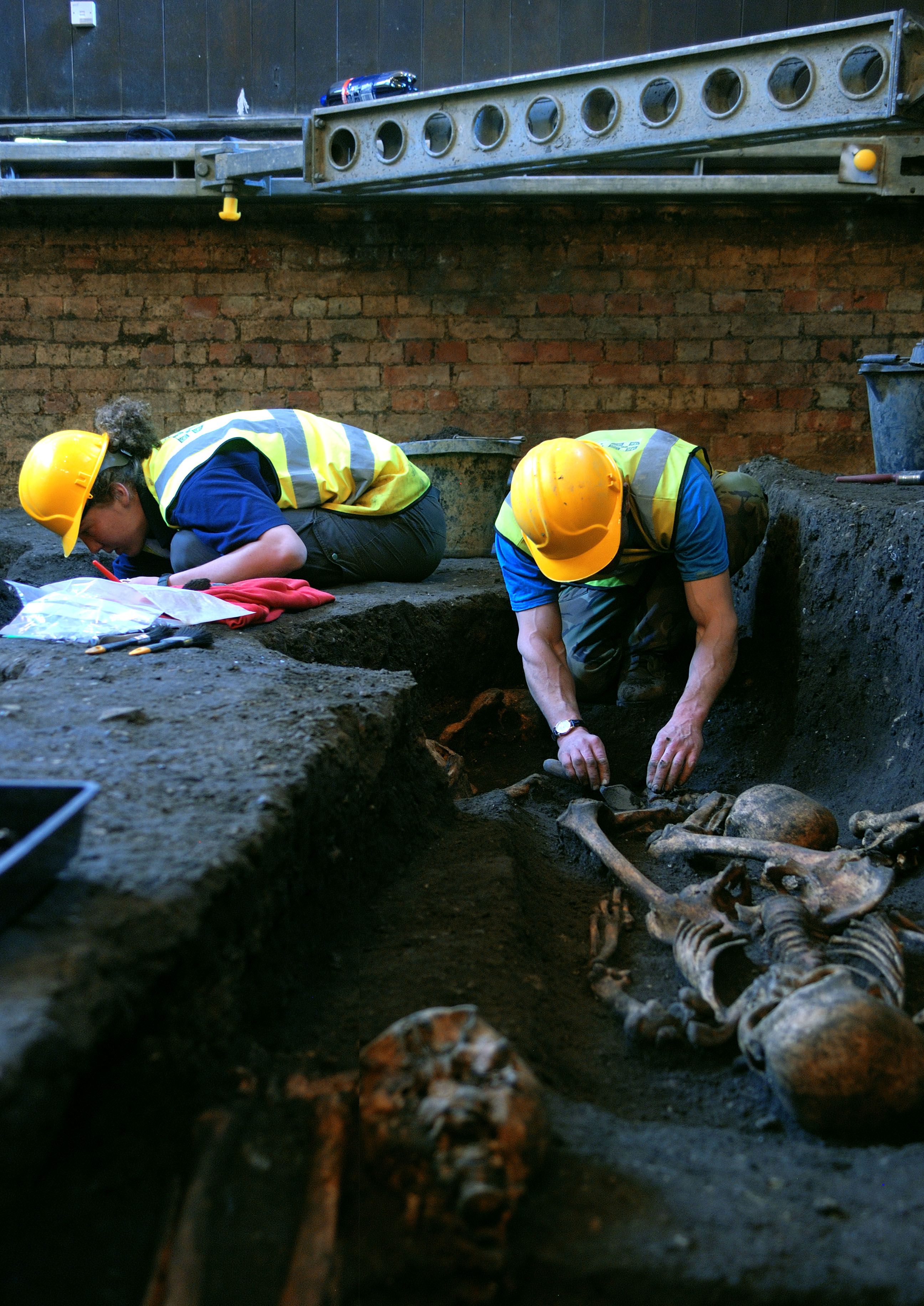
3. St John’s College
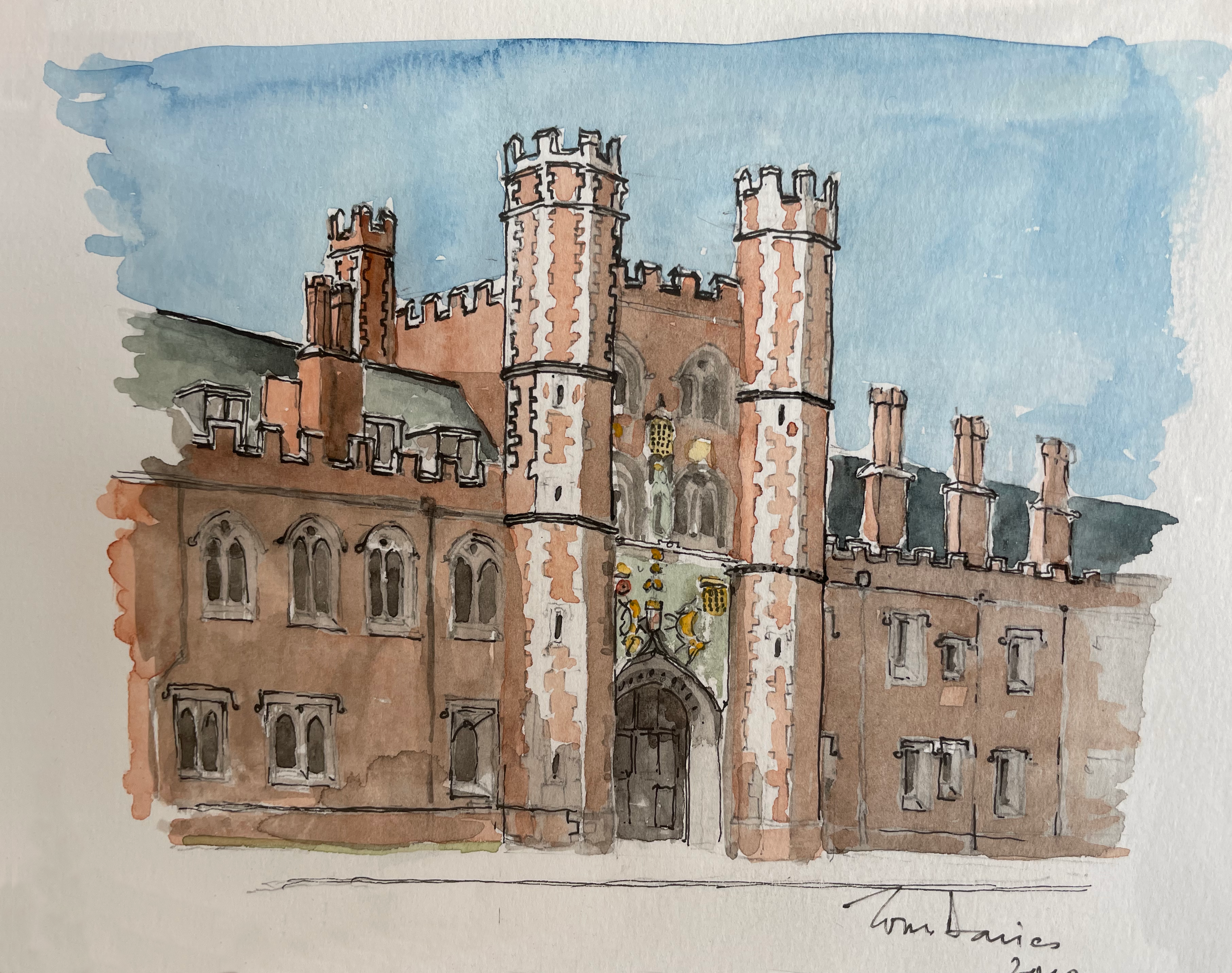
Great Gate
Great Gate
Before its conversion into a college in 1511, this site was home to the Hospital of St John the Evangelist. A monastic institution which cared for the sick and the poor, the Hospital provided shelter for travellers, as well as lodgings for the blind, lame and elderly.
Early hospitals such as this would have had no doctors – the only physicians were found at the top end of the social scale, attached to homes of the rich. Most monastic hospitals were run by monks or nuns with general nursing skills.
Medieval public health problems on a scale unimaginable today plagued such institutions – the most disastrous of all being the Black Death.
Also known as the Great Plague or Bubonic Plague, victims of the Black Death suffered large swellings of the glands – known as buboes – and dark, blue-black blotches on the skin. Death was swift, usually within a week.
The unlucky victims caught the disease from fleas, which had previously feasted on the blood of infested rats. Medieval Cambridge was a haven for such vermin, its unpaved streets effectively open sewers.
Cambridge was renowned for the Plague. In 1441, King Henry VI who had just founded King’s College, cancelled a visit here on account of “the pestilence that long hath reigned”.
The whole University was often forced to disband during such epidemics. In 1665 Isaac Newton fled back home to Lincolnshire, remaining there for eighteen months until the worst of the Plague was over.

Sir Issac Newton (George Frederick Chambers, Public domain, via Wikimedia Commons)
Sir Issac Newton (George Frederick Chambers, Public domain, via Wikimedia Commons)
Head up St John's St and turn left onto Bridge St. Keep walking over the bridge, up Magdalene St and cross over the traffic lights. On your left is the Museum of Cambridge.
4. Museum of Cambridge
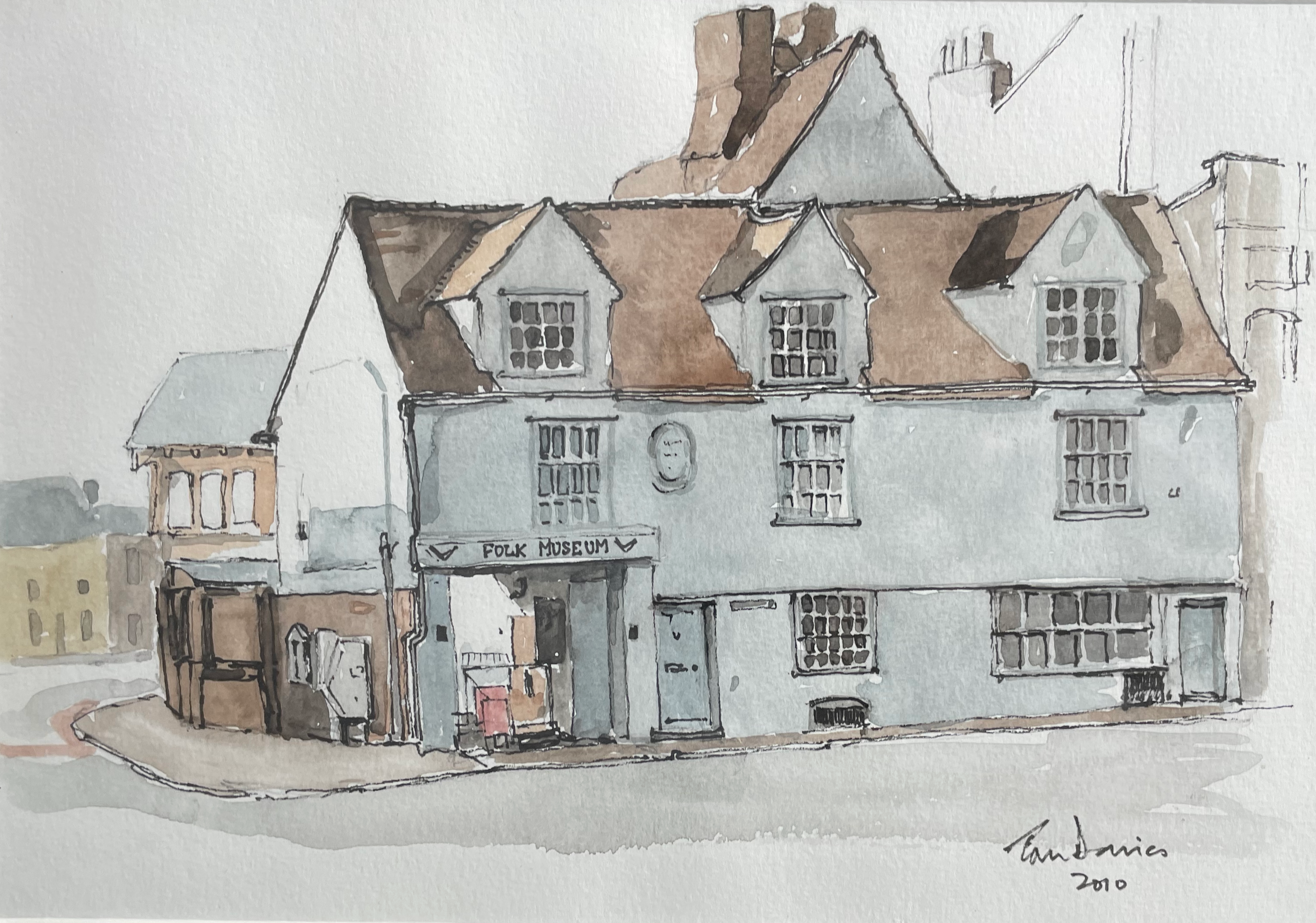
Folk Museum (now Museum of Cambridge)
Folk Museum (now Museum of Cambridge)
Note: the audio recording refers to this as the Folk Museum. The museum has since been renamed as the Museum of Cambridge.
The contents of this small but fascinating museum reflect the everyday lives of local people in centuries past. For the majority, until quite recently, medicine was a matter of self-help. Unable to afford a doctor, people often found ingenious ways of making sense of sickness, using a mixture of superstition, folklore and witchcraft.
Many of these ‘folk cures’ seem today, not only absurd, but also somewhat gruesome. Common treatments included wearing a dried pig’s bladder – cut open and smeared with goose-fat – as a chest protector in winter, or carrying a pair of mole paws in your pocket to ward off rheumatism!
Aromatic herbs and plants, often grown in specially cultivated “Physic Gardens”, were also used to ward off “bad air” thought to cause disease.
Superstition and folklore existed alongside the practice of religion and the healing traditions of the medieval Catholic Church. One such example in the Museum of Cambridge is a piece of bread baked on Good Friday. It was once believed such bread would never go mouldy, and even cure a variety of ailments.
However, Physicians treating wealthy patients made use of what were then ‘cutting edge’ theories and applications, such as astronomy and astrology. Similarly, Zodiacs and birth-charts were consulted to tell the right time for blood-letting and other surgical procedures.
Ordinary folk had to resort to the less refined services of Barber Surgeons whose trade included dentistry, blood-letting and other minor surgery. The local Apothecary shop dispensed a wide variety of cheap pain-killing drugs, such as laudanum (opium) and tobacco.
Head back down Magdalene St, this time stopping at the bridge.
5. Magdalene Bridge
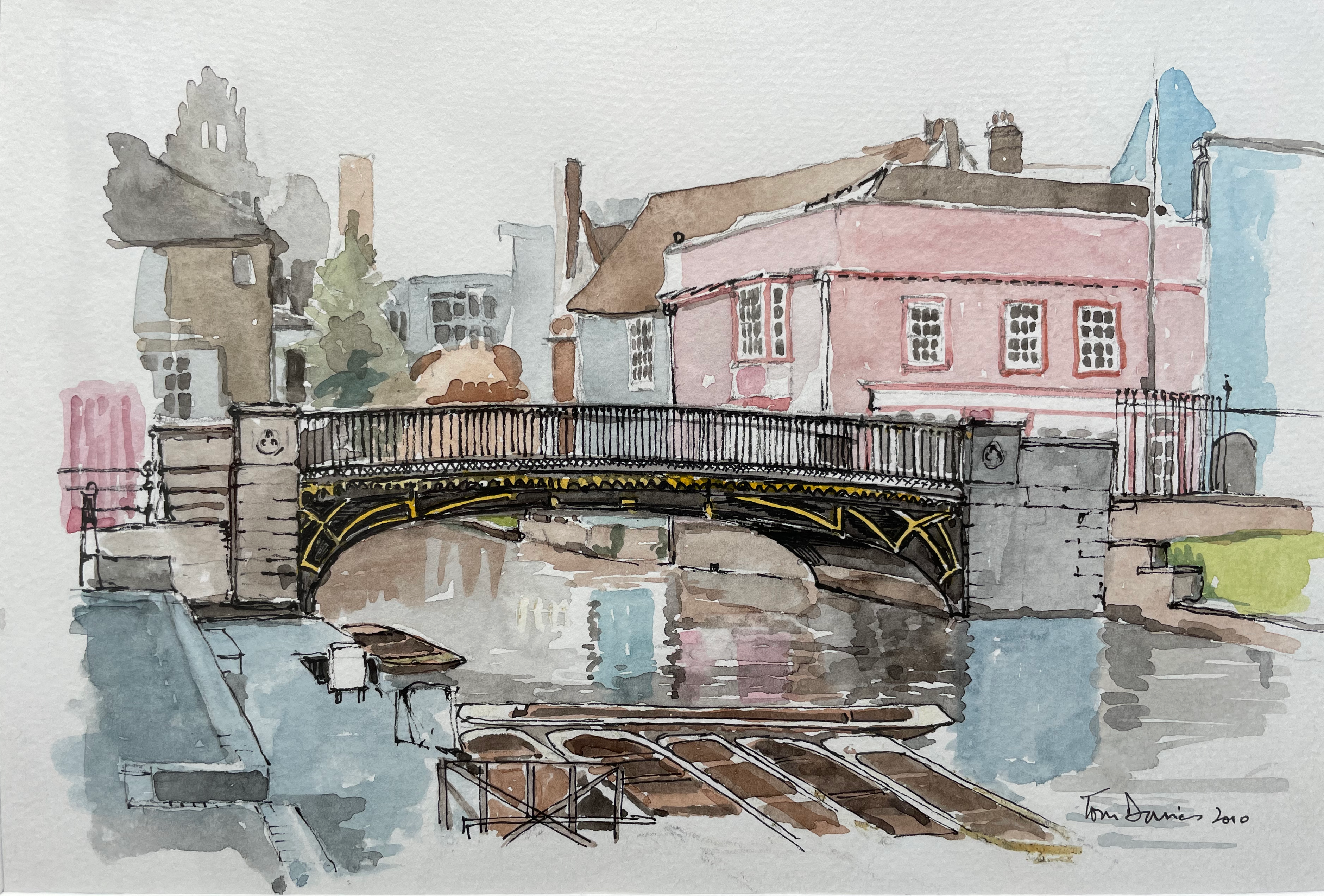
Magdalene Bridge
Magdalene Bridge
Throughout its history, Cambridge has depended heavily on the river for trade and travel. Today, Magdalene Bridge marks the site of the very first crossing point over the River Cam, made over twelve centuries ago.
During the medieval period, this very spot was also the site where another waterway, known as the King’s Ditch, discharged into the river. Originally dug as a defensive trench, the townsfolk used this Ditch as a convenient rubbish dump.
A statute of 1388 ordered the King’s Ditch should be cleared of “dung and filth of garbage and entrails, as well of beasts killed, as of other corruptions”. In 1502, three heads of Colleges were fined by the Town Court for having “privvies” (toilets) overhanging the Ditch.
The streets of medieval Cambridge were, in themselves, a deadly health hazard. Unpaved and unlit until the 18th century, they were mud-baths, running with sewage, blood, offal and home to wandering animals such as hogs and sheep.
The river Cam was not much cleaner. During Queen Victoria’s visit in 1890, she enquired of the Master of Trinity as to the nature of those pieces of paper floating in the river… “Those Ma’am”, he replied, “are notices prohibiting bathing!”
Diseases such as dysentery and typhoid were widespread, caused by poor hygiene and contaminated water. It wasn’t until 1895, that the Cam was radically improved by the opening of a new, state-of-the-art pumping station. Here, two colossal steam engines pumped Cambridge’s sewage out of town to Milton, a task they continued to perform until 1968.
Head back down Bridge St, turning once again onto St John's St and down Trinity St. Turn right after Gonville & Caius College and head down Senate Passage. Stop with the steps leading into Senate Yard to your left and look to your right.
6. Gate of Honour
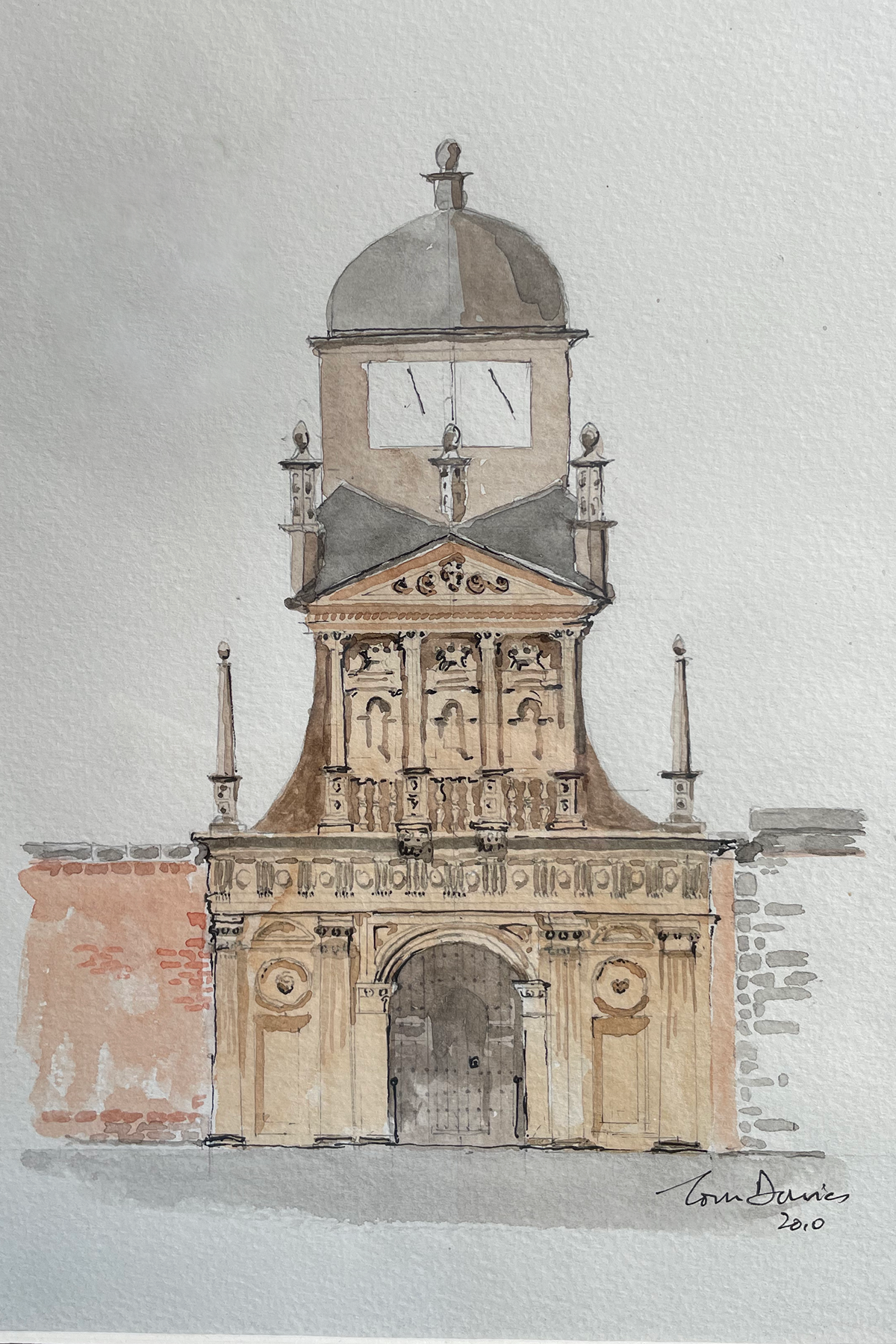
Gate of Honour
Gate of Honour
Built in 1575, this unusual gate would have been regarded as state- of-the-art modern architecture, representing the earliest appearance of the Italian Renaissance style in Cambridge. It remains equally striking today.
The gate was designed by Dr John Caius, Master of the College and an eminent physician. Caius had finished his training in Padua, then the leading medical centre in Europe, and returned to Cambridge with an Italianate taste in architecture and a set of humanist ideals, which he then proceeded to apply to the University.
For many centuries, medicine - or Physic as it was known - was by far the smallest faculty in Cambridge. Taught from the 13th century onwards, the subject relied heavily on classical texts and placed little emphasis on observation or practical experiments. This was accompanied by the study of astronomy and astrology.
On his return, Caius introduced some radical new anatomical practices, such as autopsy and dissection, into the medical curriculum. He also designed a new court for his college, which broke with medieval tradition by having only three sides. “Lest”, he said, “the air, being prevented from free movement, should be corrupted and so do harm to us.”
Caius fostered a strong medical tradition at the college which continues today. In the 17th century, another famous alumnus – Royal Physician Dr William Harvey - famously demonstrated the circulation of the blood, an idea which was to become the foundation for all modern research on the heart and cardiovascular system.
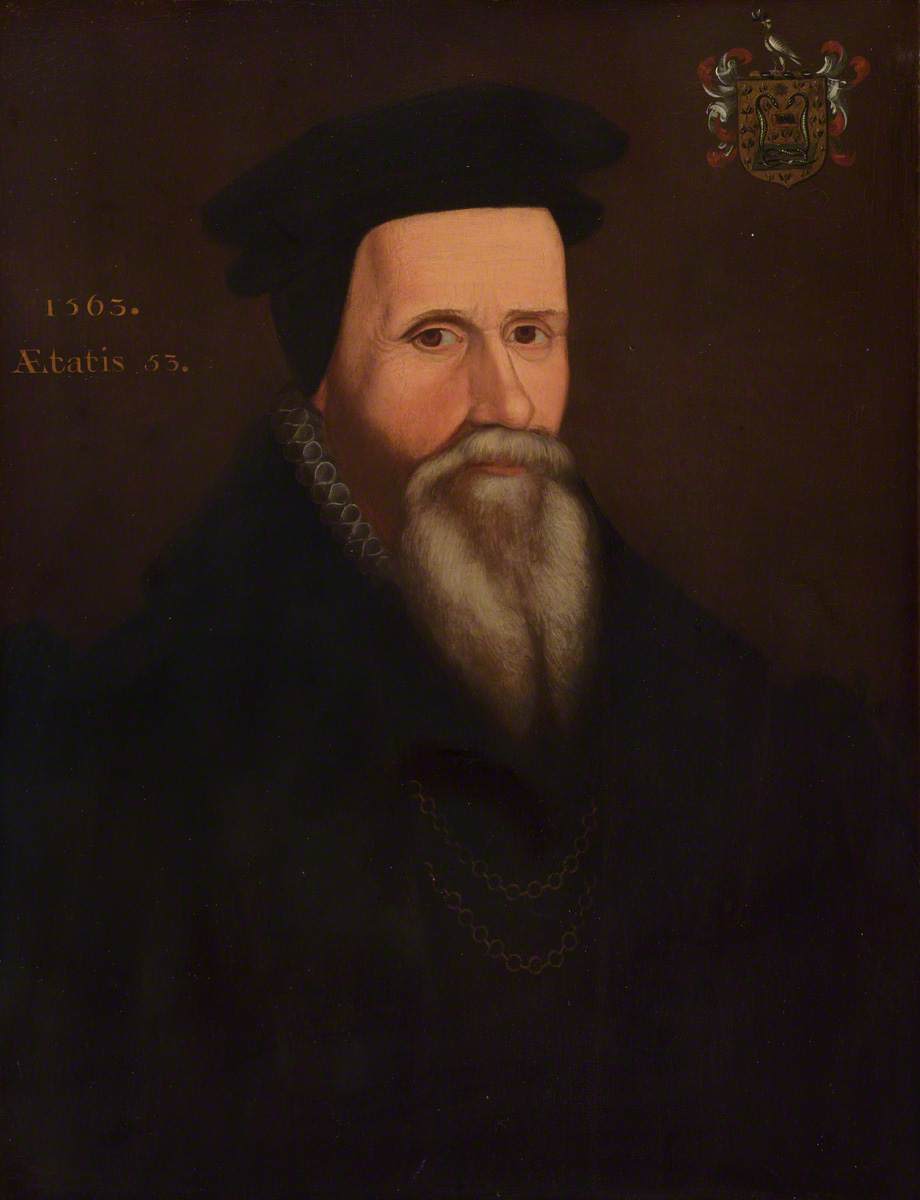
John Caius, Master of Gonville & Caius College, Cambridge
John Caius, Master of Gonville & Caius College, Cambridge
Head back up Senate Passage and turn right onto King's Parade. Keep walking until you pass Corpus Christi College on your left. Immediately next to this is St Botolph's Church.
7. St Botolph’s Church
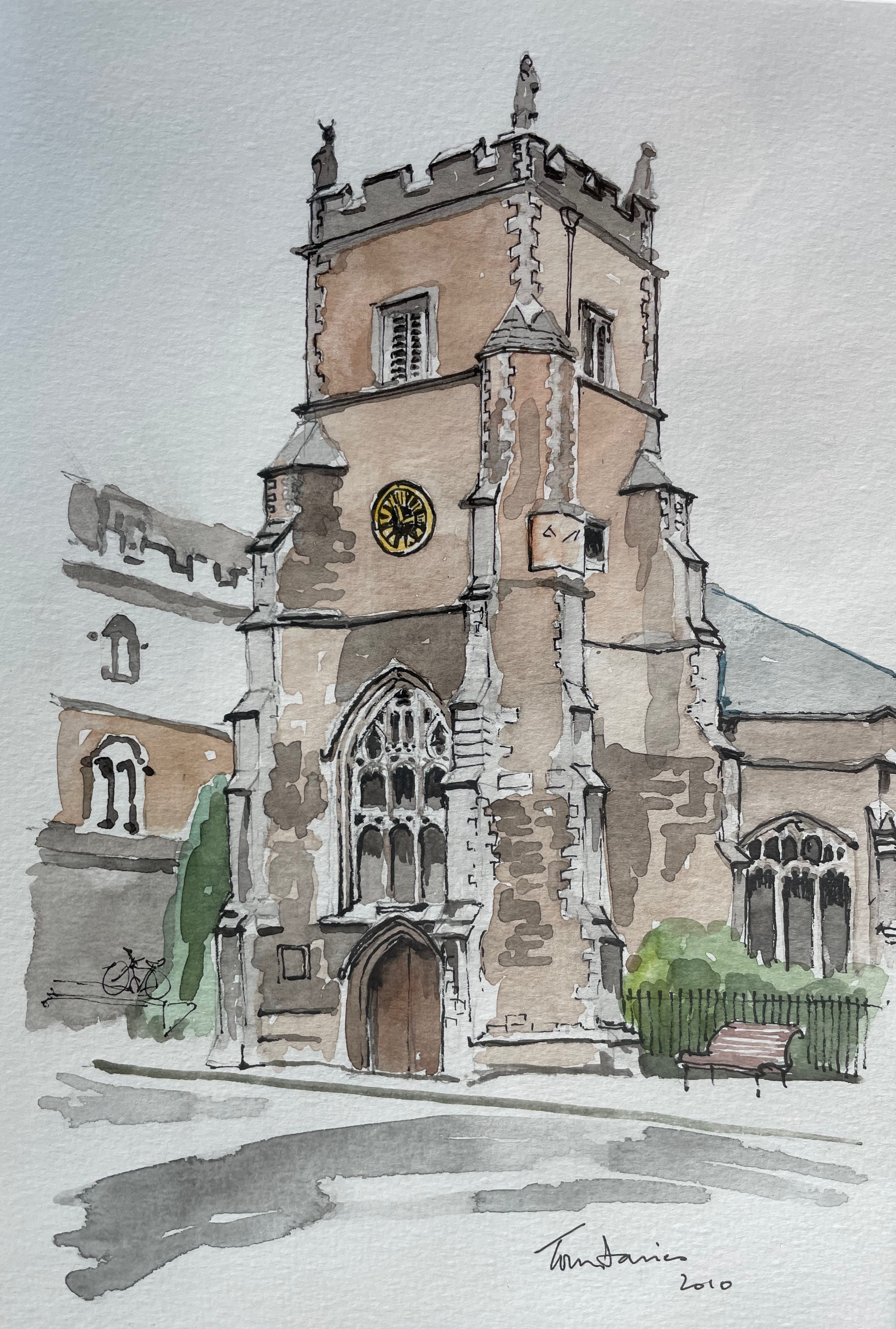
St Botolph's Church
St Botolph's Church
Dedicated to the Patron Saint of travellers, the 14th century church of St Botolph once stood next to the South Gate, through which all visitors from London would have entered the town.
Churches once occupied a central position in people’s lives. People would be buried in their own parish churchyards – usually the same church in which they had been baptised or married. Today, Britain has thousands of parish churches like St Botolph’s, which contain the history of a whole community, much of which is recorded in its parish registers.
Beginning in 1538, parish registration coincided with a time of rapid population growth in England. Cambridge saw a huge influx of beggars, vagrants, unemployed and sick from the outlying villages.
The English Poor Law Act was introduced in 1601, as a new, enlightened system of poor relief. Each parish was responsible for looking after its own poor. Money raised through compulsory property tax was dispensed to the needy as “out-relief”, in the form of bread, clothing, fuel or rent.
Inside the church, there is a plaque commemorating several benefactors’ donations to “the poore of this parish”.
In order to decide exactly who the ‘deserving’ local poor were, the clergy had to keep strict registers of their parish, recording all baptisms, marriages and funerals. Today, these records are used by The Cambridge Group for the History of Population and Social Structures at the University, to build a picture of how chances of survival changed over the centuries.
Carry on along Trumpington Street past Silver Street and turn right down Mill Lane. Be careful of construction works along Mill Lane. Cross over the River Cam. You will now be on Laundress Green.
8. Laundress Green
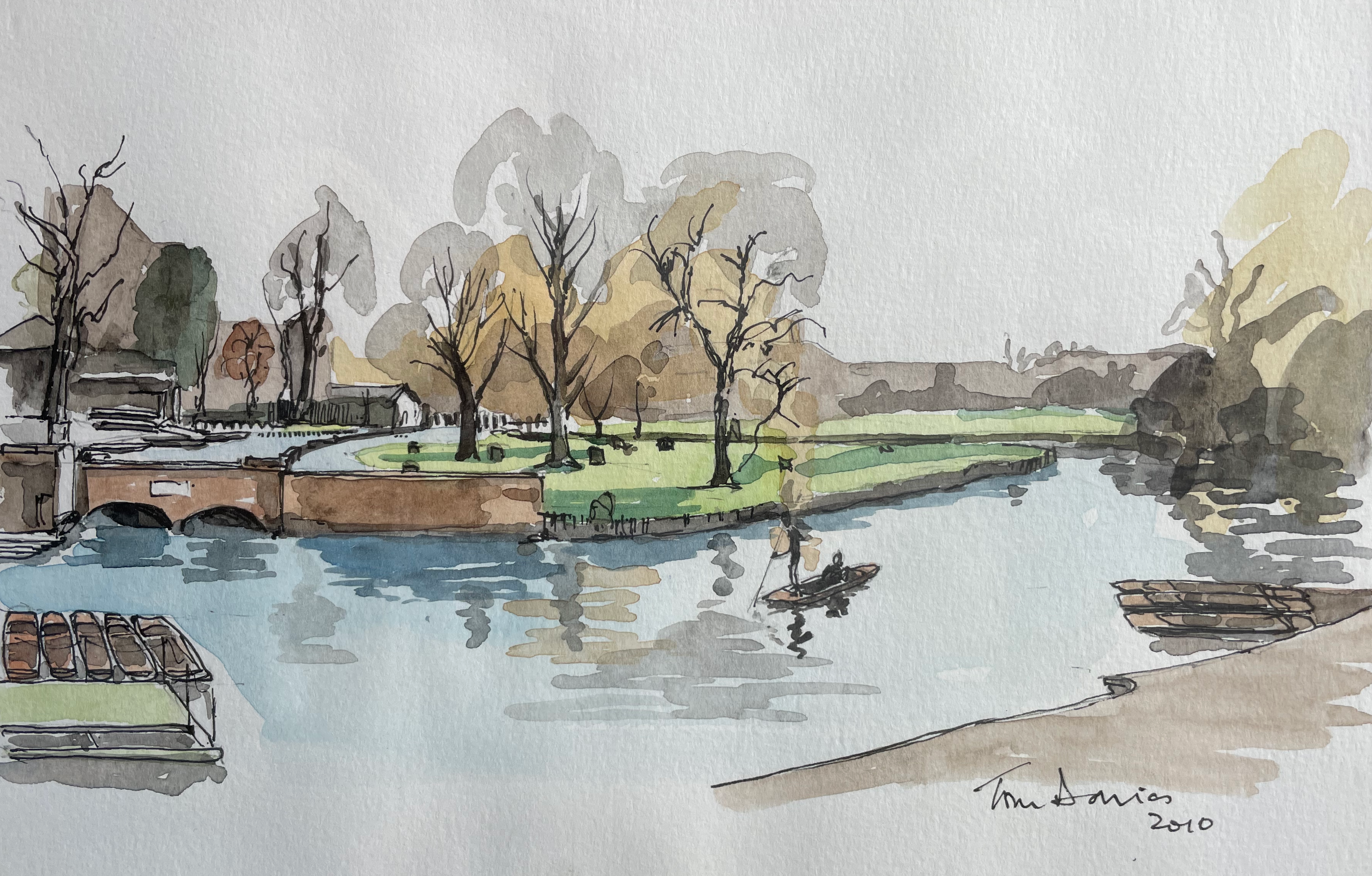
Laundress Green
Laundress Green
Today one of Cambridge’s best-loved green spaces, Laundress Green is so-called because it was once used by University washerwomen, who spread out their washing to dry on the grass.
From here you can walk out directly into the fens. The majority of these huge wetlands, which once dominated eastern England, have now been drained, ploughed into fields, or built upon as in Cambridge itself.
Right up to the 20th century, life expectancy for fenland folk was low. People suffered from all sorts of diseases, the worst of which was malaria. The smelly, stagnant water was a breeding ground for vast numbers of mosquitoes, but until the link between these biting insects and malaria was discovered by Robert Ross, it was literally the “mal–aria” – bad air – which was blamed for the deadly disease.
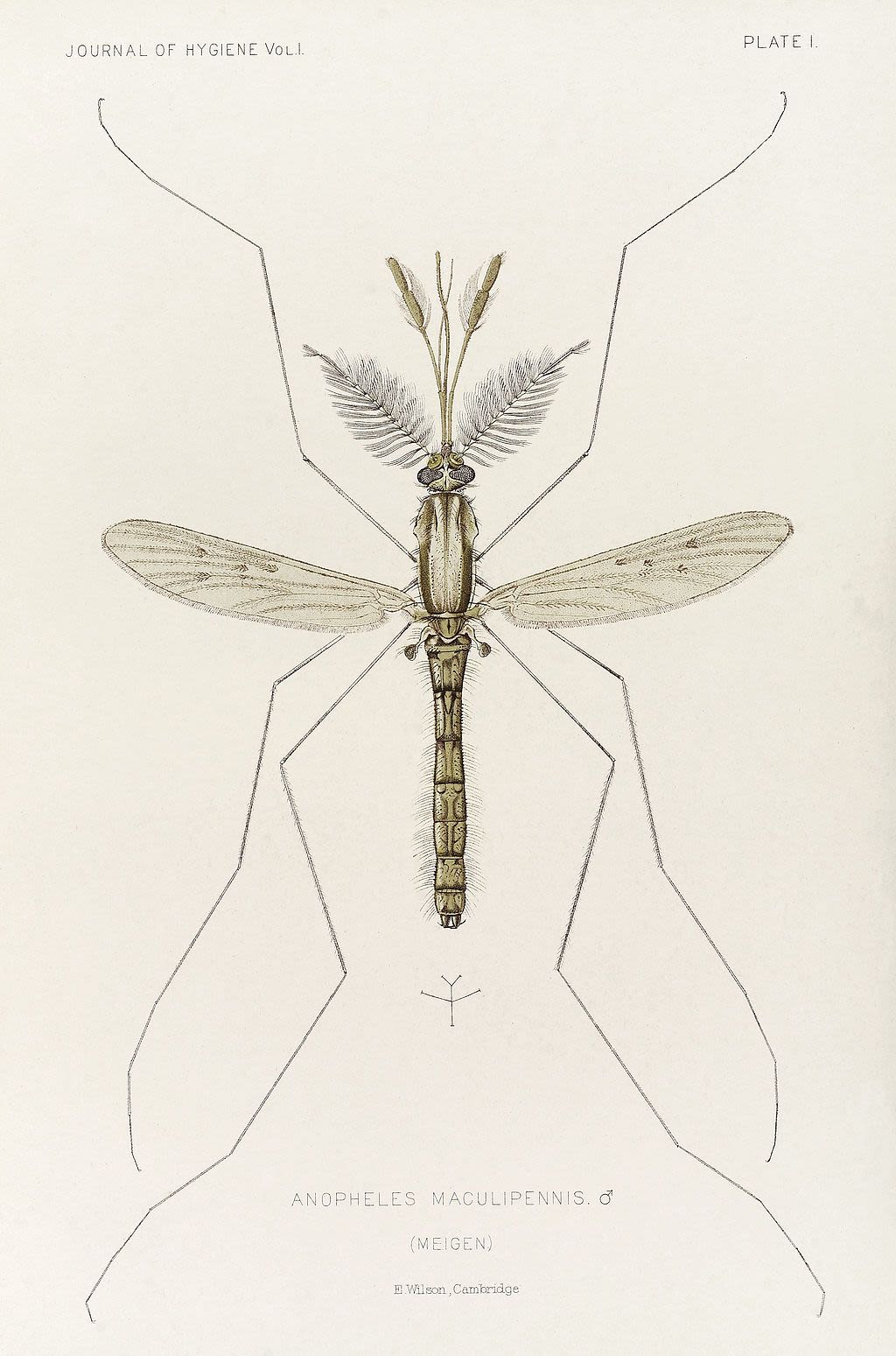
Anopheles atroparvus, mosquito species indigenous to Britain and capable of carrying the Plasmodium vivax parasite, which causes benign tertian malaria. (Wellcome Images)
Anopheles atroparvus, mosquito species indigenous to Britain and capable of carrying the Plasmodium vivax parasite, which causes benign tertian malaria. (Wellcome Images)
Known as ‘Marsh Fever’ or ‘Fen Ague’, malaria caused fevers, vomiting and diarrhea. In an attempt to treat themselves, fen people used opium or laudanum, made from a locally grown white poppy valued for its sedative effects.
Local pubs served beer laced with opium and there was widespread addiction. It was even used to stop babies from crying, contributing to infant mortality.
In the 1660s, a local quack-doctor called Robert Talbor began to treat malaria patients with the imported bark of the cinchona tree, which contained what we now know as quinine. Talbor’s success brought him such celebrity that he even went on to treat King Charles II.
“The use of opium continued even when malaria itself was possibly declining. One of the great reports of the 1860s by one of the medical officers of heath…raises the point that in rural fenland East Anglia…infant mortality rates were as high, if not higher, than in industrial towns.”
Mary Dobson, Medical Historian
Head back to Trumpington Street and turn right. Carry on past the Fitzwilliam Museum on your right. On your left you will see the Cambridge Judge Business School. This is your next stop.
9. Old Addenbrooke’s
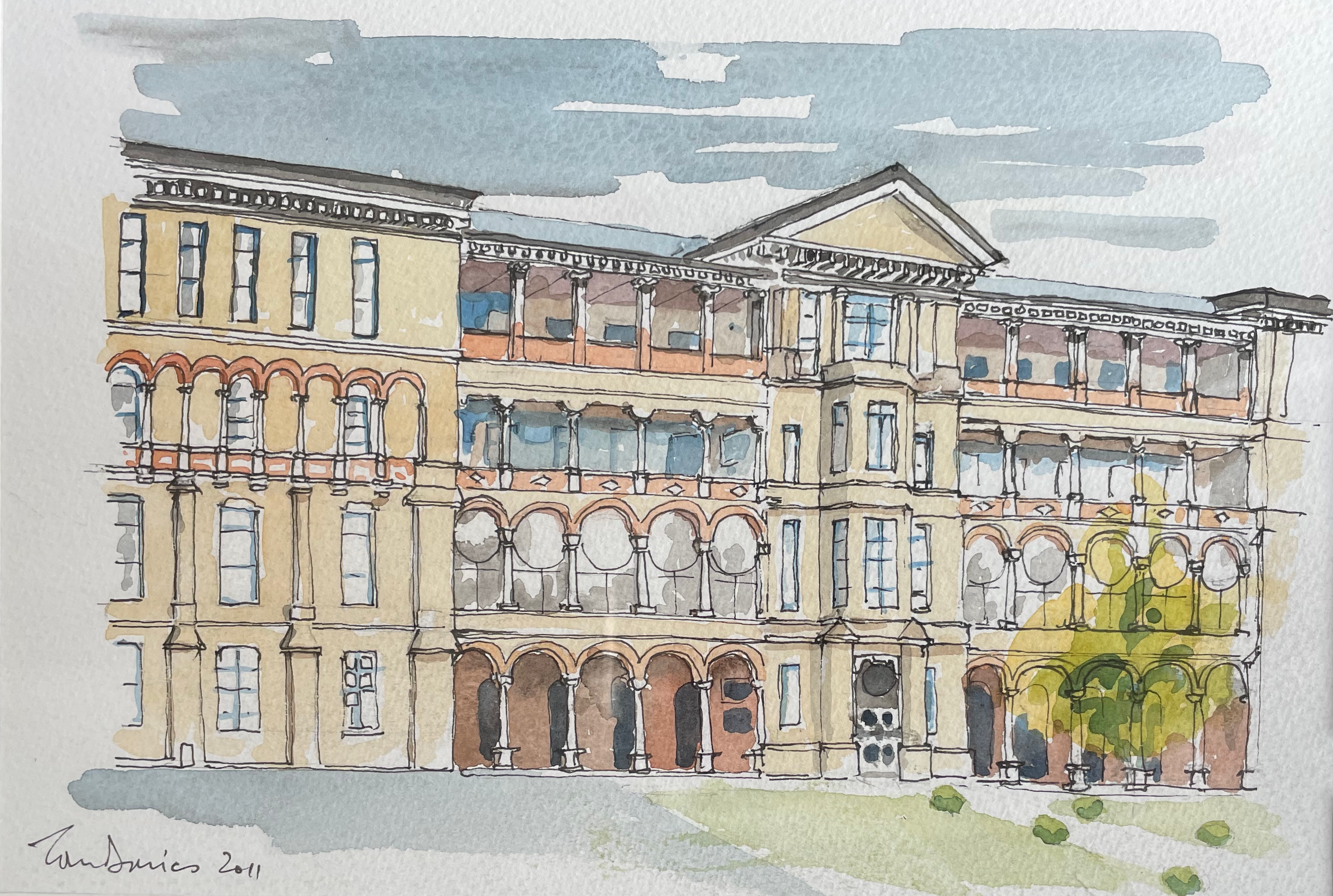
Cambridge Judge Business School
Cambridge Judge Business School
The magnificent multi-coloured façade of the Judge Business School displays a carved inscription of this building’s role in a previous life – as the old Addenbrooke’s Hospital.
Founded by John Addenbrooke in 1766, the hospital was one of several in England set up as philanthropic ventures and funded by voluntary contributions. Its original founders were all senior members of the University and there were also town representatives sitting on the board of governors.
The first Hospital staff included only 3 physicians, 3 surgeons and a resident apothecary. There was a matron, as well as a few nurses. It offered a range of outpatient treatments including vaccinations, but not everyone was admitted as an inpatient.
Amongst those excluded from treatment were pregnant women, young children, the terminally ill and those with fevers.
In the early years, surgical procedures were performed without the aid of anaesthetic, including the extraction of kidney stones, tumours and amputations. Anaesthesia was first used in Cambridge in 1847 for the amputation of a finger by eminent surgeon Sir George Humphry.
With the founding of the National Health Service in 1948, it became clear that the old hospital was nearing the end of its useful life. The building of a newer, larger Addenbrooke’s soon began, the first phase of which was opened on Hills Road in 1962.
Today the story is far from over. With plans to more than double in size by 2020, Addenbrookes is now set to become the largest biomedical campus in the whole of Europe.
Continue along Trumpington Street.
10. Trumpington Street
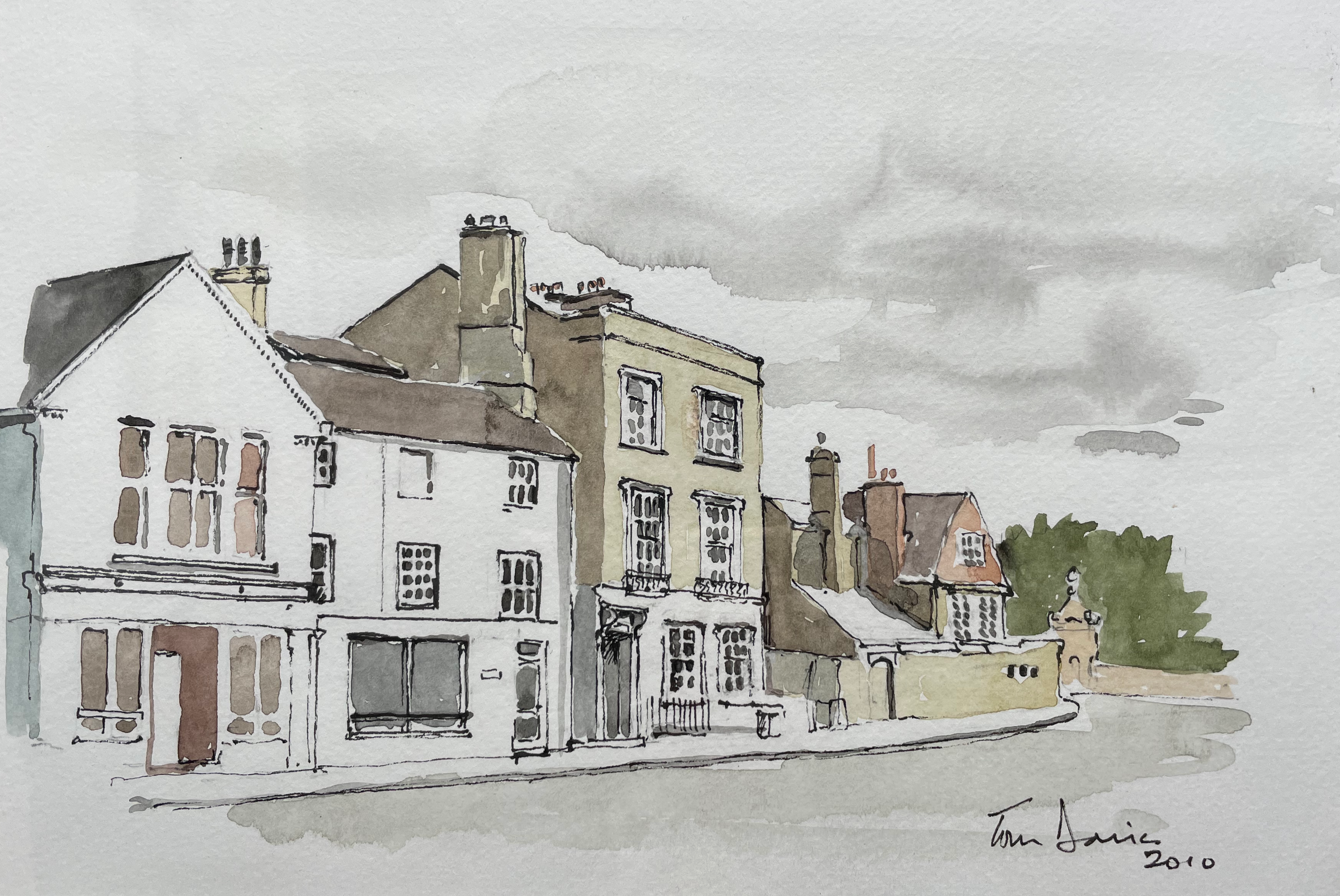
Trumpington Street
Trumpington Street
Until the 19th century, Trumpington Street marked the edge of Cambridge’s development to the south, along the main London road. Beyond this were vast fields and open fenland. It was here that the leper hospital of Saints Anthony and Eligius was founded in 1361.
It was one of the many leper hospitals – or leprosaria – which sprang up all over medieval Europe, at a time when leprosy was endemic. Leprosy (or Hansen’s Disease as we now know it) has varied symptoms, but primarily affects the skin, nerves and mucous membranes, resulting in painful skin lesions and disfigurements.
Leprosy was regarded in many different ways in the Middle Ages. Some saw it as a manifestation of God’s punishment, associated with lust and other kinds of sexual sin. Others believed lepers were enduring a kind of Purgatory on earth and therefore their suffering was considered more holy than that of an ordinary person.
Strict leper laws were enforced throughout Europe, which segregated sufferers in an attempt to contain what was then perceived as a highly contagious disease. However evidence suggests that lepers were also well cared for within medieval society. Hospitals were run along monastic lines with a well-appointed chapel and lepers received regular supplies of candles, food, ale and clothing.
Although leprosy had waned by the mid-14th century, Leper Houses continued to provide a refuge for the poor and those with infectious diseases, such as syphilis.
Today, the medieval remains of Barnwell Leper Chapel still stands on the Newmarket Road, all that is left of a substantial Leper Hospital on that site.
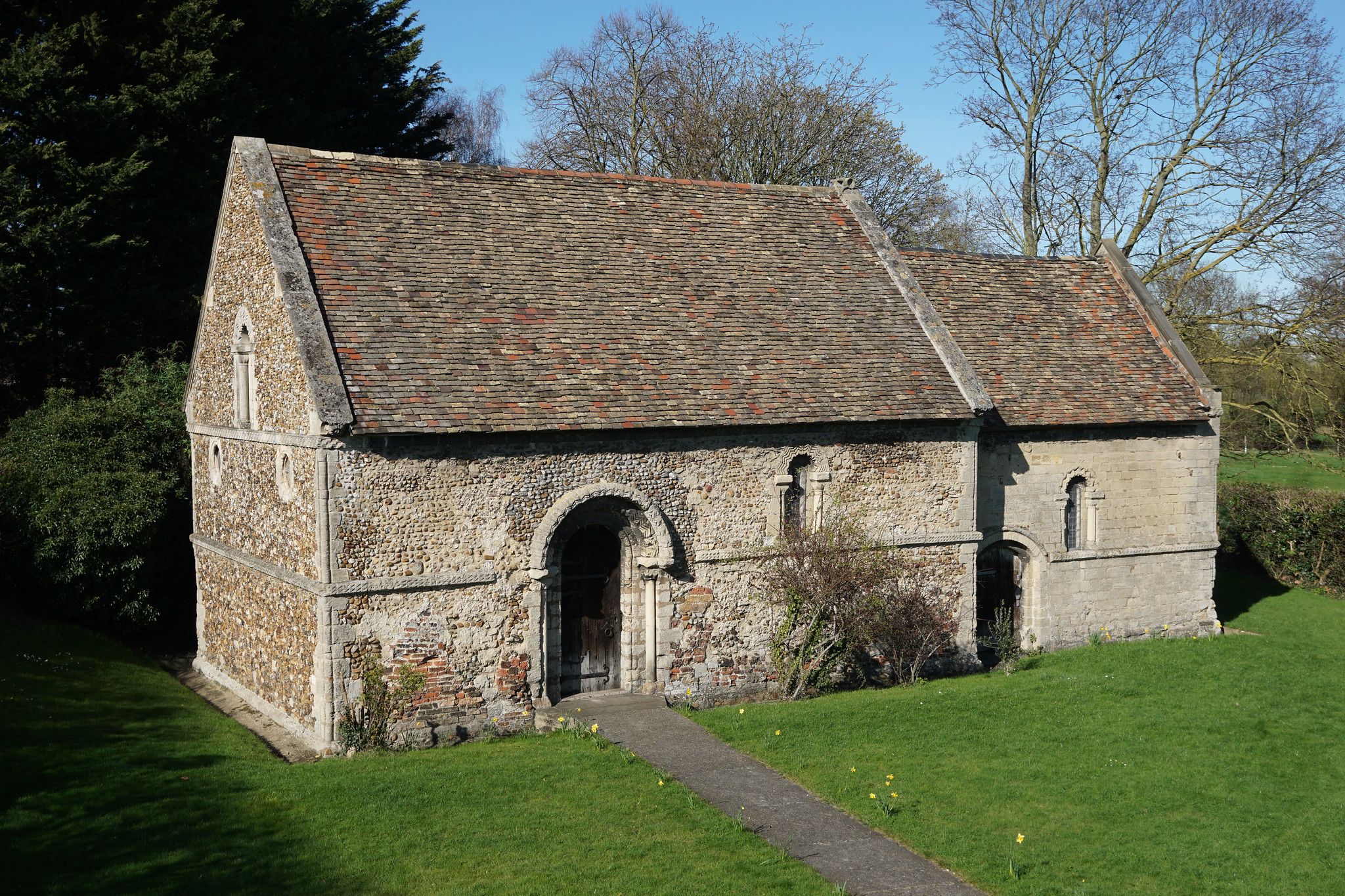
The Leper Chapel of St Mary Magdalene, Newmarket Road, Cambridge (Credit: David)
The Leper Chapel of St Mary Magdalene, Newmarket Road, Cambridge (Credit: David)
Turn left up Lensfield Road. On your right, you will see a narrow waterway. This is your next stop.
11. Hobson’s Conduit
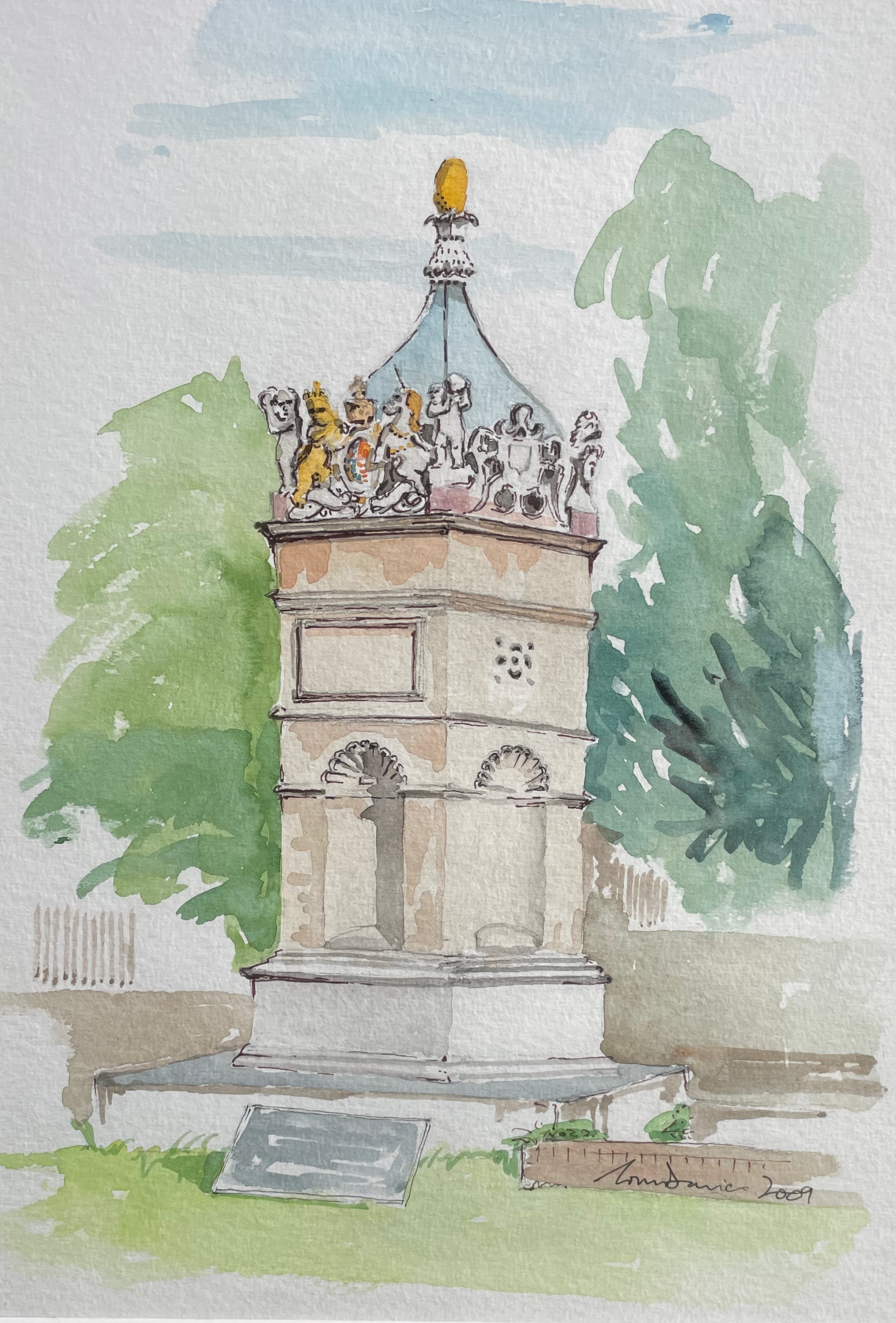
Hobson's Conduit
Hobson's Conduit
Now situated at the head of Hobson’s Conduit, this fountain once stood in Cambridge Market Place, where it supplied drinking water to the public for over two centuries.
Water is still brought to the town via an open brook from Nine Wells, a series of chalk springs 3 miles outside Cambridge. Before the advent of this conduit, however, most townspeople in medieval Cambridge had little access to fresh drinking water. A popular alternative was to drink beer and there were many breweries in the town.
It was not until the late 16th century that a plan to bring fresh water to the town was established by Vice Chancellor of the University, Andrew Perne. This finally came into fruition as a joint Town and Gown venture in 1614, with local carrier Thomas Hobson, providing most of the funding.
Hobson (who was later Mayor of Cambridge) was a successful local entrepreneur, operating a mail delivery service from his stable and renting out his horses to students and Fellows at the weekends. He insisted on strict rotation – so that only the best rested horses were hired out. Hence the phrase “Hobson’s choice”; meaning no choice whatsoever!
Hobson’s Conduit – or the ‘New River’ as it was known – was a considerable feat of engineering. Fresh water was distributed through the town, eventually reaching the market place via an underground pipe.
At a time when waterborne diseases were a major killer, Hobson’s Conduit undoubtedly increased people’s chances of survival.
Numbers 12 and 13 take you on a diversion that will take around 45 minutes. To do this, head up Lensfield Road, across the traffic lights at Regent Street and up Gonville Place. Turn right onto Mill Road and keep walking until you pass Perowne Street on your left. You will come to Ditchburn Place.
If you don't wish to do the detour, turn left onto Tennis Court Road and head to the Department of Biochemistry on your right.
12. Ditchburn Place
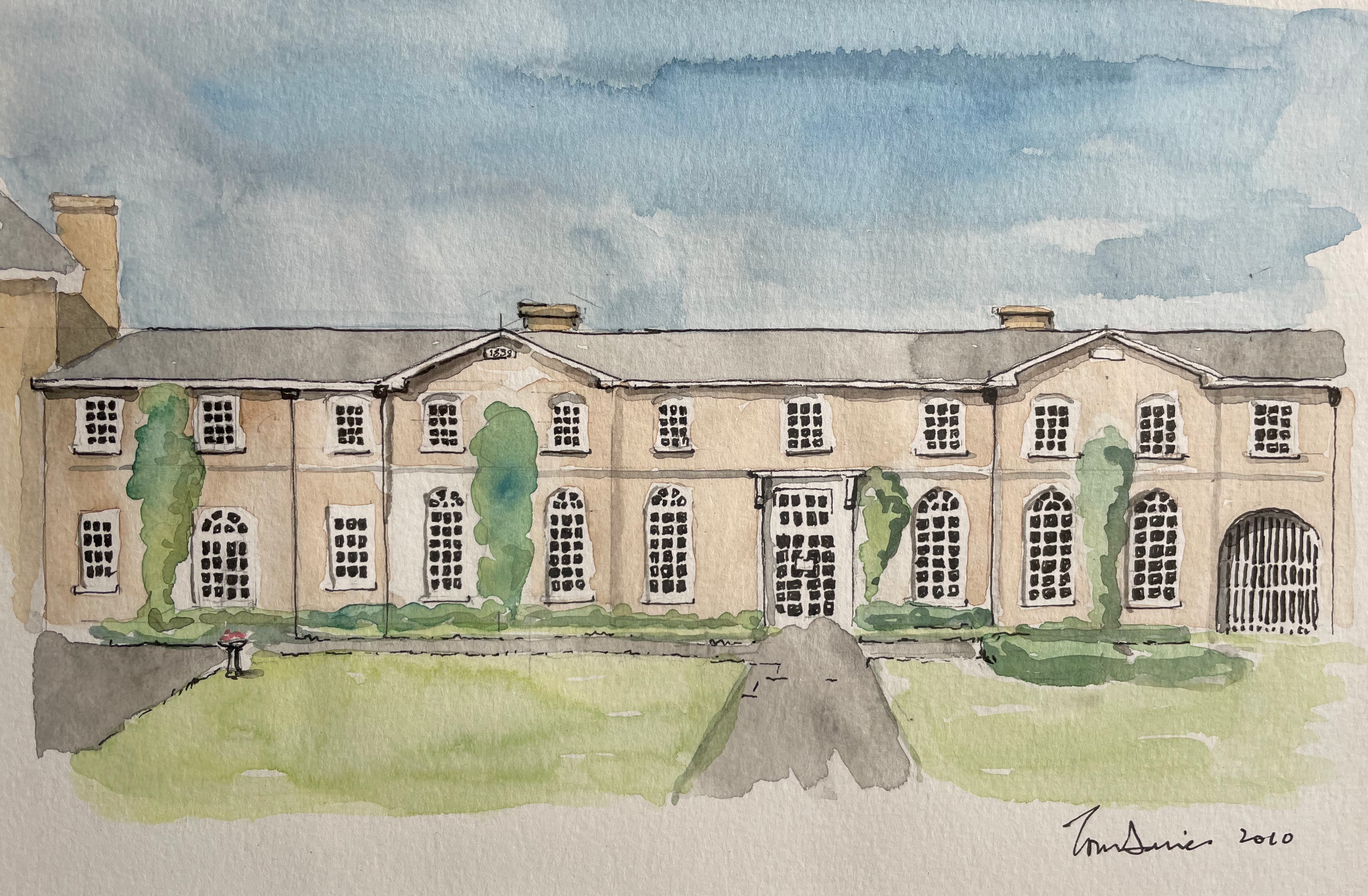
Ditchburn Place
Ditchburn Place
Built in 1838, the Cambridge Workhouse or “Union” as it was known, was built to accommodate 250 poor, elderly, sick and disabled people. Now known as Ditchburn Place, it is named after the last Master and Mistress of the workhouse.
Workhouses were designed to alleviate suffering following the Poor Law Amendment Act of 1834. Though not primarily intended as hospitals, workhouses had their own infirmaries and were obliged to take in chronically ill paupers excluded from ordinary hospitals.
A sick person in the 19th century could lose their job, their home, and even their family. Workhouses were the last resort. Regimes were strict, and married couples were often separated, women being housed on one side and men on the other.
Before 1838 there were no trained nurses in any workhouse infirmary outside London. Nursing care here was risky, and usually carried out by the female inmates. Often illiterate, they were left to make sense of the medicine bottles the best they could.
From 1948 to 1983 this was the town’s Maternity Hospital. Up until the mid 1930s, however, most women chose to give birth at home rather than in unsanitary hospital conditions. At this time, childbirth was a major cause of death amongst all social classes. The biggest threat was Puerperal or “child- bed” fever, a dangerous form of blood poisoning contracted soon after giving birth and caused largely by poor hospital hygiene.
The improvement of hospital hygiene, the advent of sulpha drugs in the 1930s, and of antibiotics ten years later made pregnancy and childbirth a much safer process.
Return to Mill Road and continue on to Gwydir Street, where you will turn left. Stop at the Bath House on the left.
13. Bath House, Gwydir Street
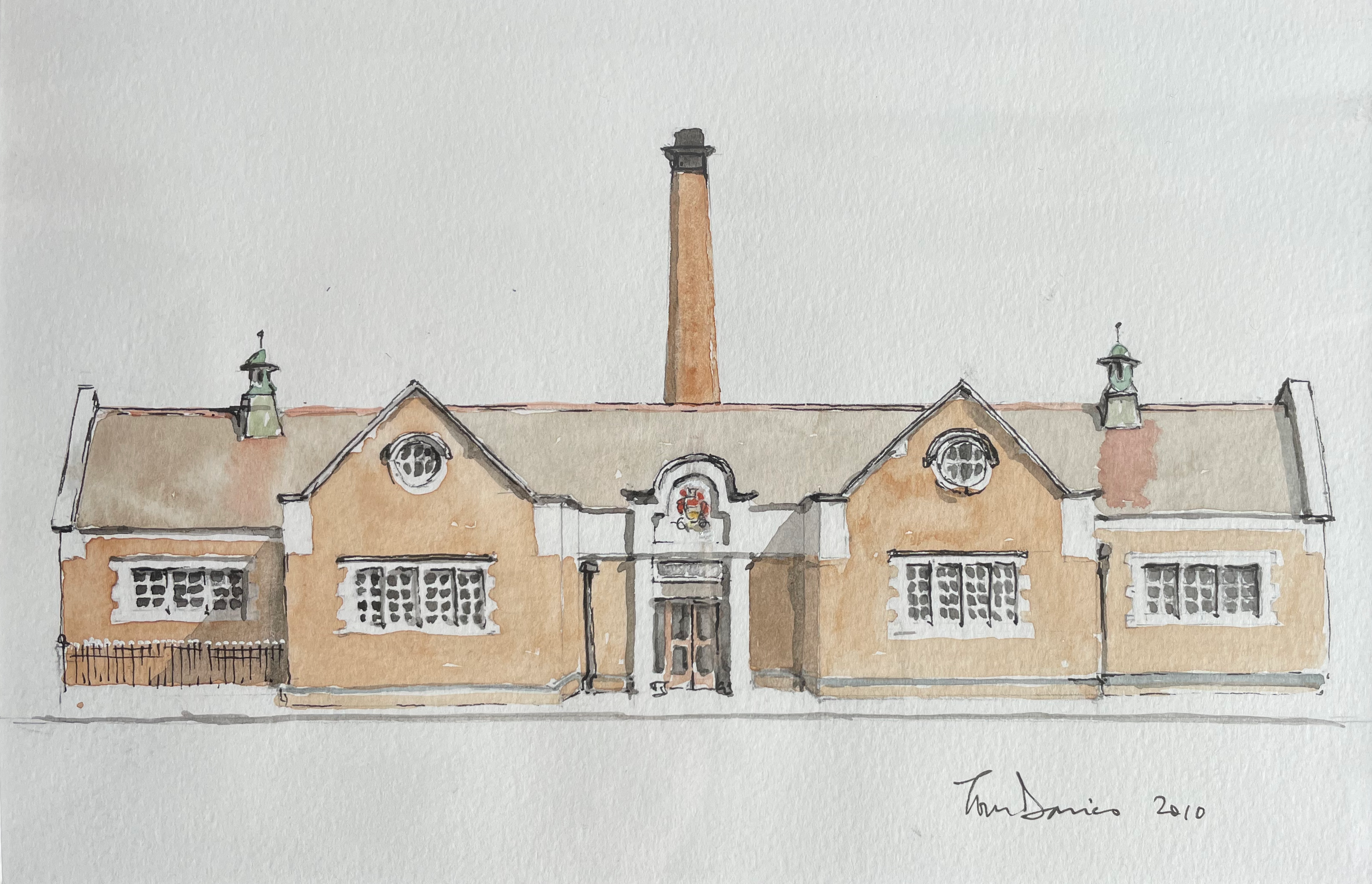
Bath House, Gwydir Street
Bath House, Gwydir Street
This Public Bath House first opened its doors in 1927 with 9 separate baths for men and 9 for women. Costing four pence for a hot bath, a towel and soap, it offered many working class people an alternative to a tin bath by the fire.
Although a prosperous, expanding town, Victorian Cambridge had been no cleaner than in previous centuries. Life expectancy was low – as in other British cities.
Damp and overcrowded housing and poor santitation left people vulnerable to diseases such as tuberculosis, pneumonia, diphtheria, typhus and smallpox. Typhoid was endemic and epidemics of cholera recurred in these overcrowded urban conditions.
These illnesses were not widely understood, and many believed cholera and similar diseases were caused by “bad air” – a ‘miasma’ emanating from decayed organic matter.
Germ theory, or bacteriology – the idea that disease is due to tiny invasive beings – was one of medicine’s true revolutions in the late 19th century. One of the pioneers, Louis Pasteur, was able to demonstrate the microbial causes of many diseases..
However, doctors were slow to accept and popularise this vital information and the impact of germ theory on public health remained limited until the early 20th century.
By 1901 the population of Cambridge had expanded enormously, reaching a total of 30,000. With the arrival of the railway and other associated trades and industries, the Romsey area grew rapidly and sanitation was very poor – hence this local bath-house.
As late as the 1960s, public bathhouses like this were still an important local amenity for many working class men and women, and the very last bath was finally run here in 1977.
Retrace your steps. Just before you arrive at Hobson's Conduit, turn right along Tennis Court Road and walk up the Department of Biochemistry.
14. Biochemistry Department
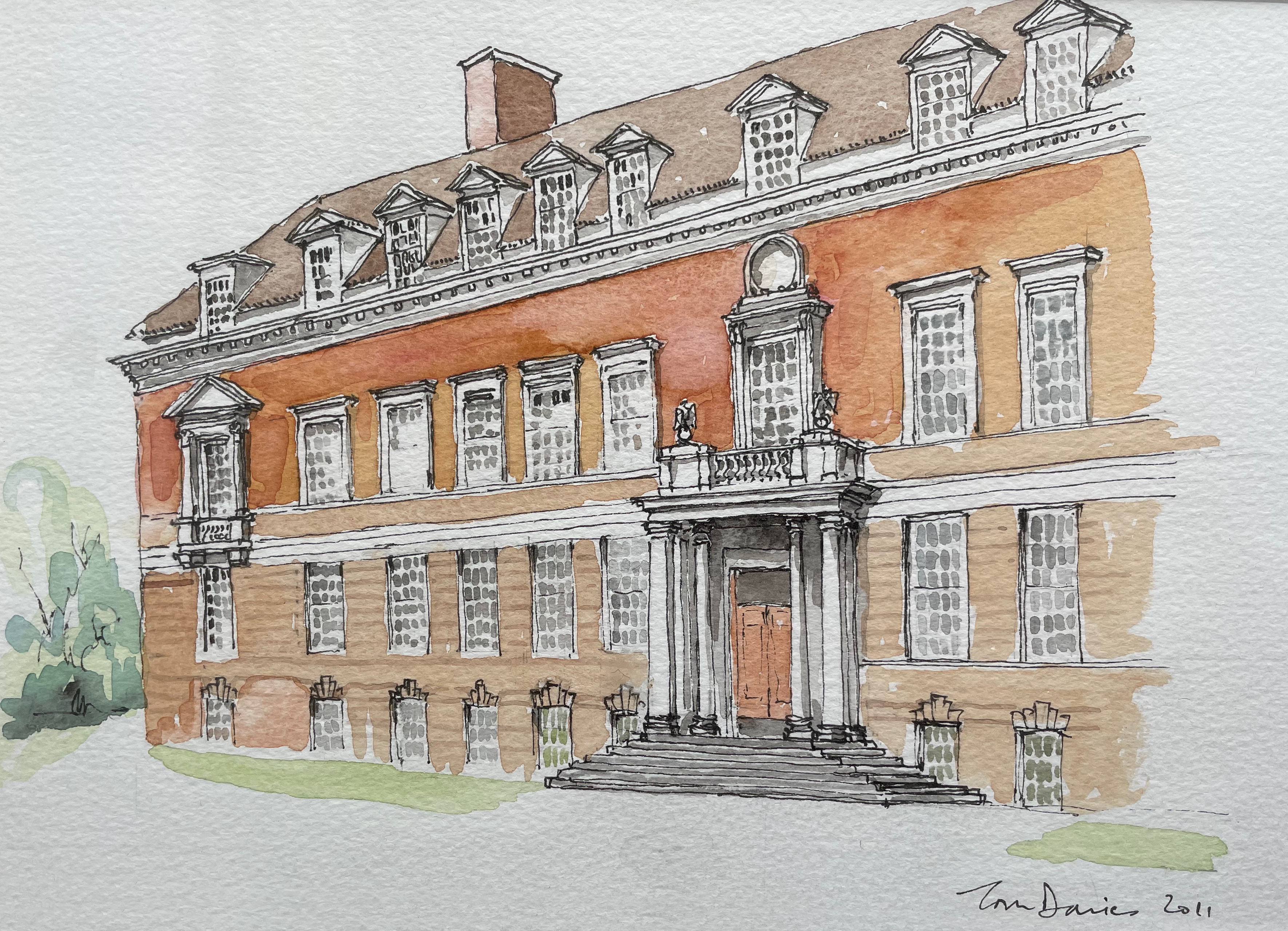
Biochemistry Department
Biochemistry Department
Named after Sir Frederick Gowland Hopkins, first Professor of Biochemistry at the University of Cambridge, this imposing red-brick building played a seminal role in the history of world health.
Biochemistry was a new science which examined the chemical processes in living organisms and the department was founded here in the 1920s. Here, Hopkins discovered that no animal could survive without “accessory food factors”, or vitamins as we now know them.
Another outstanding scientist in this field was Dr Elsie Widdowson, who died in 2000. In the 1940s, with her scientific partner, Dr Robert McCance, she oversaw the first compulsory addition of a substance to food, when calcium was introduced to bread. They were also responsible for formulating war- time rationing. Some say Britain was at its healthiest under this diet of mainly bread, vegetables and potatoes.
It’s important to also mention Ronald Fisher, a Cambridge mathematical biologist who died in 1962. Fisher developed the method of random allocation which was later applied to testing whether medical treatments worked or not.. Random allocation now plays a central role in the clinical trials used worldwide to assess the effects of new drugs and treatments.
Cambridge University has continued to be a world-leader in research in statistics and in nutrition. At the Dunn Human Nutrition Unit and the new Institute of Metabolic Science on the Addenbrooke’s campus, nutrition is being studied in relation to diseases such as obesity and diabetes which are increasing threats to worldwide public health.
Continue along Tennis Court Road. Turn left onto Pembroke Street, then right up Free School Lane. Turn right at the end, then left at Aromi. Walk as far as the market square. On your right is Guildhall.
15. Guildhall
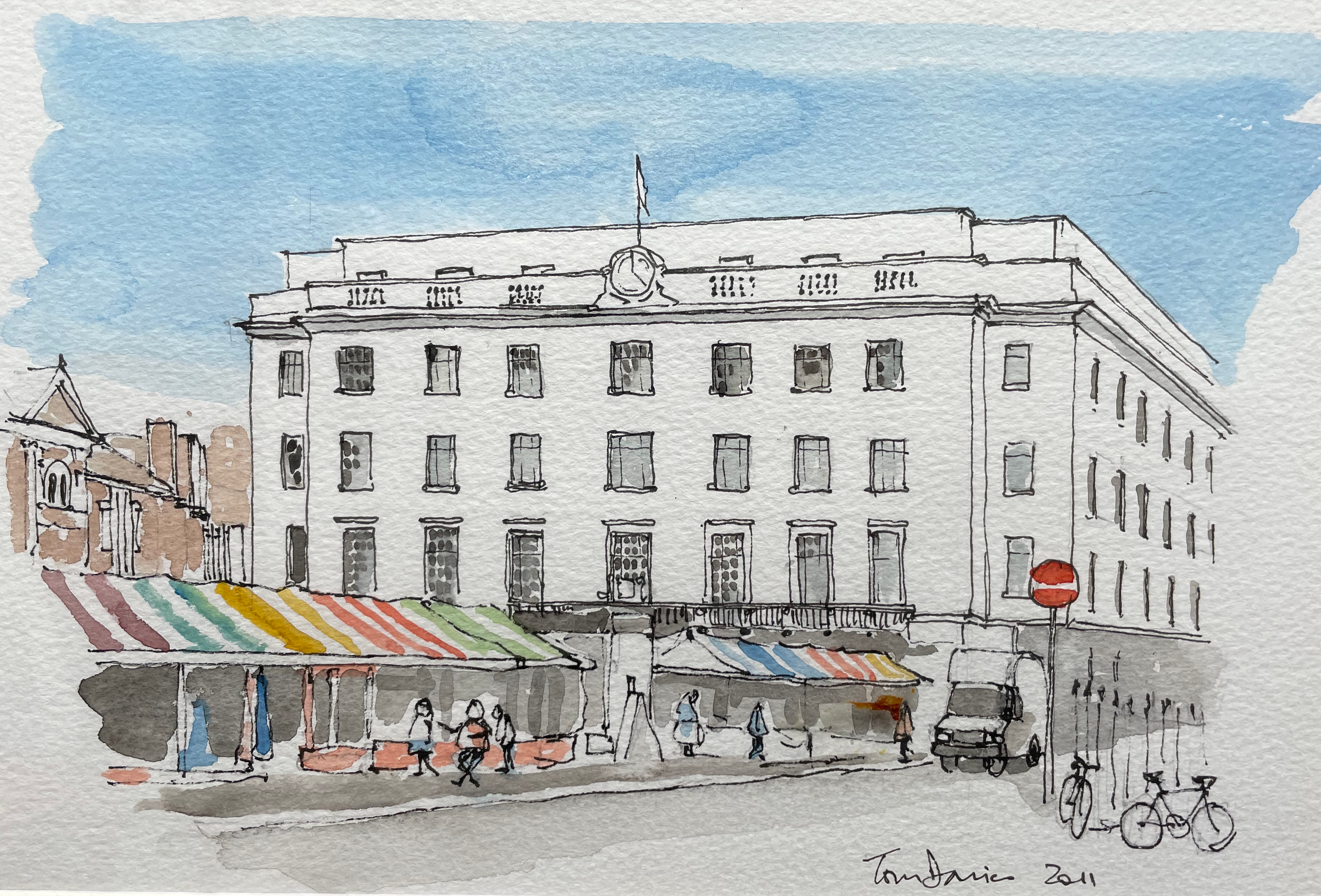
Cambridge Guildhall
Cambridge Guildhall
Until local government and the NHS were re-organised in the 1970s, the Guildhall housed Cambridge’s Public Health Department. Here, Medical Officers and Health Officials provided an interface between medical research and its implementation in the local community.
From around 1906, local Health Visitors began to visit women in their own homes, advising them on antenatal care, sanitation, birth control and child rearing. Their role was vital in educating women and dispelling ‘old wives’ tales’.
Health care, in schools in particular, was overseen by the Medical Officer of Health, who was based here at Cambridge Guildhall. Aided by Sanitary Advisors, whose role was to ensure a healthy urban environment, Medical Officers also produced a ‘Sanitary Report’. This detailed such information as the average height and weight of children, mortality rates and serious infectious diseases.
There are some shocking statistics – in 1904 roughly 1 in 8 children in Cambridge did not survive their first birthday. As late as 1950, the Medical Officer was still lamenting the overcrowding and poor housing in Cambridge as part of his survey of public health.
Nowadays public health education is delivered directly to schools and colleges, addressing a wide range of issues such as smoking, obesity and sexual health. The days of the school ‘nit nurse’ are over – public health organizations prefer to supply leaflets to parents. An increasingly health- conscious public remains informed through television, internet and health magazines.
Although outbreaks of plague, cholera and typhoid are, thankfully, unheard of now, new public health problems – alcoholism, sexually transmitted diseases and drug abuse – have taken their place.
Retrace your steps back to Bene't Street. Head down the street and you will come to The Eagle pub. This is your final stop.
16. The Eagle
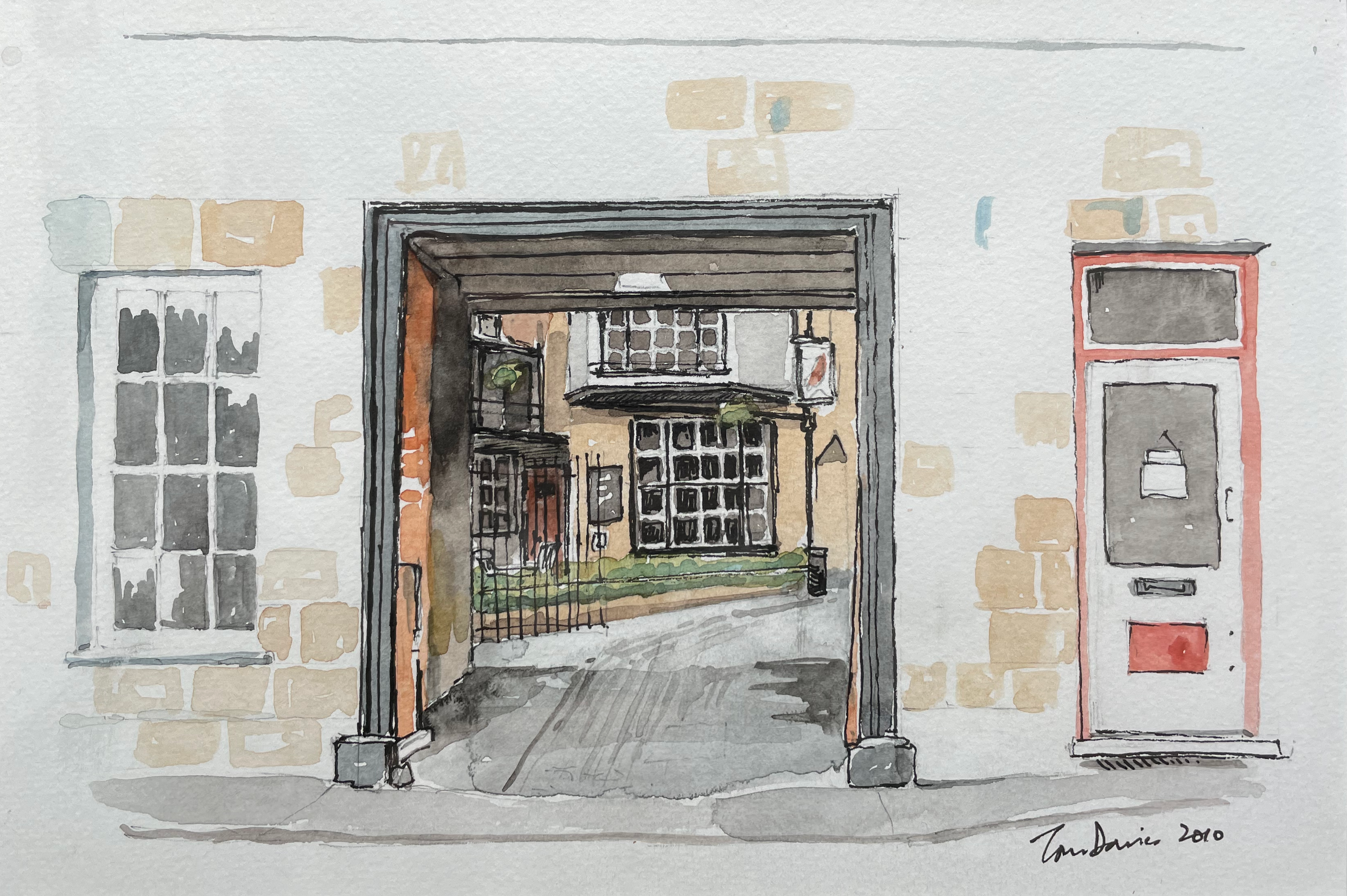
The Eagle
The Eagle
Once a coaching inn dating back to Tudor times, the picturesque Eagle Pub has always been a popular watering hole for the many scientists working at the Old Cavendish site nearby.
It was here on the 28th February 1963, that Francis Crick and James Watson first announced they had “discovered the secret of life” – DNA.
Also working at the Old Cavendish throughout the 60s and 70s was biochemist Fred Sanger, whose Nobel Prize winning work on the structure of proteins formed the basis of the whole new science of human genetics, taking forward the work of Crick and Watson.
The Sanger Centre at Hinxton, just outside Cambridge, was opened in 1993. Here, Sanger’s fundamental method of ‘reading’ DNA was used to carry out the ambitious task of sequencing the human genome.
Although the Human Genome Project has since been completed, the Sanger Centre continues its research looking for links between genes and diseases – such as diabetes, schizophrenia and cancer.
"Much good science is still done in the bar at conferences, and that’s a direct link, I think, to what Watson and Crick were doing."
Dr Julian Parkhill, Marks and Spencer Professor, Department of Veterinary Medicine

With special thanks to:
The Production Team at Cambridge Public Health: John Powles, Jane Phelps, Sean Hickin and Carol Brayne.
The Production Team at Stride Design: Vicky Smith, Simon Ruffle, Sarah Baylis and Emily Chenery.
Our external experts: Mary Dobson, Julian Parkhill, Samantha Williams, Carol Rawcliffe, Rosemary Horrox, Leigh Shaw-Taylor, Simon Szreter and Malcolm Underwood.
Words by Stride Design
Watercolours: Tom Davies
Layout: Craig Brierley
This walk was first created in 2009 for the University of Cambridge's 800th Anniversary. The project was made possible with the support of the Medical Research Council Biostatistics Unit and the Eastern Region Public Health Observatory.